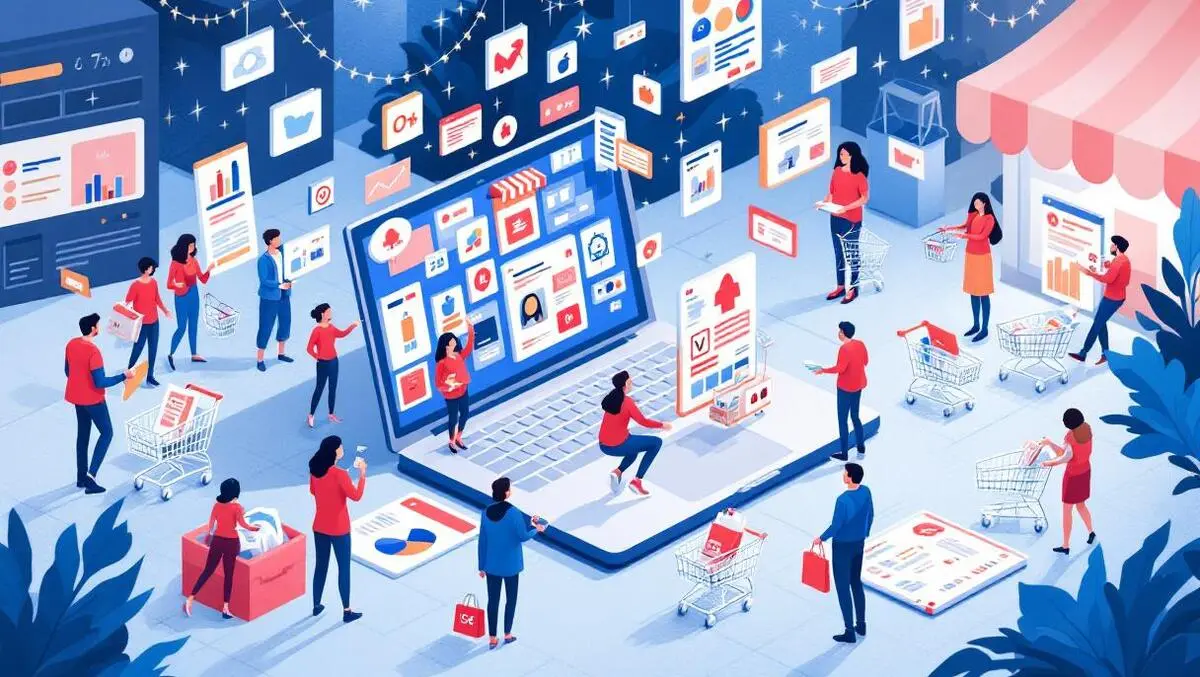Data compiled by Adobe indicates a significant surge in generative AI-powered traffic to retail websites in the United States, underpinning an ongoing shift in consumer behaviour and shopping methods.
Adobe's research spans over 1 trillion visits to retail websites, supplemented by a survey of more than 5,000 US consumers. The findings reveal an extensive rise in the use of generative AI chat services and browsers by shoppers, particularly evident during the 2024 holiday shopping period and continuing into 2025.
Adoption of generative AI
During the two-month 2024 holiday shopping window, Adobe recorded a 1,300% year-over-year increase in traffic to retail sites originating from generative AI sources. On Cyber Monday alone, the rise reached 1,950%. Despite such growth, generative AI-driven traffic remains smaller than other established channels such as paid search or email; however, the acceleration stands out within the broader retail landscape.
Adobe's latest data, extending to July 2025, shows that generative AI traffic has continued to expand. In July 2025, this traffic climbed 4,700% year-over-year. Earlier in the year, the rise in generative AI traffic was also notable, up 1,100% in January 2025 and 3,100% in April 2025, both compared to July 2024, which Adobe identifies as too early for meaningful baseline measurements due to low initial usage.
The companion consumer survey offers further insights into AI adoption. Among the respondents, 38% reported having used generative AI for online shopping, with 52% indicating plans to do so within the year. Shoppers cited a variety of tasks they use AI for: conducting research (53%), receiving product recommendations (40%), seeking deals (36%), creating shopping lists (30%), getting present ideas (30%), finding unique products (29%), and utilising virtual try-on technology (26%).
Behaviour on retail sites
Adobe's analysis also explores what happens when shoppers access retail sites via AI-powered tools compared to non-AI sources. This group includes paid search, affiliates, partners, email, organic search, and social media.
Shoppers arriving through generative AI show different engagement patterns. According to Adobe, these visitors are 10% more engaged than those from non-AI sources, with visits that are on average 32% longer and include 10% more pages viewed per visit. The bounce rate among AI-referred visitors is 27% lower, which Adobe interprets as evidence of more informed shopping behaviour and greater focus during the research stage.
Of those who have used AI for shopping, 85% of respondents note it improved their shopping experience, with 73% citing it as their primary source of product research. Additionally, 83% say they are more likely to use AI for larger or more complex purchases.
While consumer engagement from generative AI sources is higher, actual conversion rates – where visits result in purchases – remain lower than those from traditional sources. In July 2025, AI-driven traffic was 23% less likely to convert than non-AI traffic. However, this represents an improvement on earlier figures: the conversion gap was 49% in January 2025 and 38% in April 2025, suggesting growing consumer comfort with completing transactions following AI-led research.
This shift is affecting revenue outcomes. Adobe reports that AI-driven revenue-per-visit increased by 84% from January 2025 to July 2025 compared with non-AI traffic. In July 2025, a visit from an AI-driven source was worth just 27% less than a non-AI visit, a significant change from July 2024, where the figure lagged by 97%. Adobe expects this trend to continue as more consumers use generative AI via mobile devices, which are associated with higher rates of impulse purchases. Mobile's share of generative AI-driven traffic grew from 18% in January to 26% in July 2025.
Implications for retailers
The evolving role of conversational interfaces in everyday activities such as shopping is impacting how businesses consider their engagement strategies. Adobe's analysis notes the arrival of more advanced AI agents, which are expected to take on more complex tasks and offer highly tailored recommendations to shoppers.
As consumers increasingly rely on generative AI to support a range of shopping tasks, businesses are being prompted to reassess their digital and customer engagement approaches to align with changing online behaviours.



